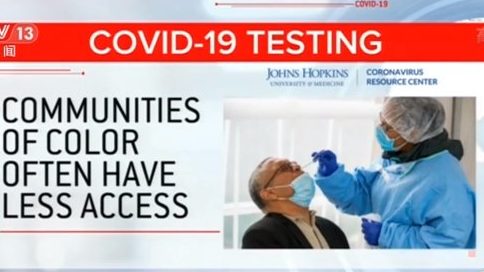Many remote areas in the United States do not have fixed inspection points and testing facilities. Residents have to drive far away to undergo a test. Some medical and health experts refer to these areas as “detection deserts.”
Lisa Wright lives in Sumter County, Alabama, USA. Since the county does not have a fixed detection point for the new coronavirus, she often needs to drive an hour to go elsewhere for testing.
Lisa Wright, a resident of Sumter County, Alabama: I want to know if I have the virus.
Marcus Campbell, Mayor of Sumter County, Alabama: We are the “desert” area to be tested. When we hear that testing is done elsewhere, people always ask why testing is not available in Sumter County.
According to the findings of Johns Hopkins University in the United States, compared with white communities, communities of color in the United States have fewer opportunities to get tested for the new coronavirus. For example, in Alabama, communities with predominantly African descent residents can get fewer tests than predominantly white communities; in Oregon, Delaware, New Mexico, and South Dakota, some Hispanic and indigenous communities A similar situation has occurred in areas dominated by residents.

U.S. public health experts said that the coverage of new coronavirus testing in the United States is not wide enough. Residents in the “detection desert” zone cannot obtain timely detection and diagnosis, which is very unfavorable to the prevention and control of the epidemic.
Jennifer Nuzzo, a public health researcher at Johns Hopkins University: “Testing in the desert” is an area where people who need testing cannot get ( coronavirus ) testing. I am very worried that we are missing the opportunity to diagnose cases, which will aggravate the spread of the virus and put us at a more disadvantaged position in response to the epidemic.



